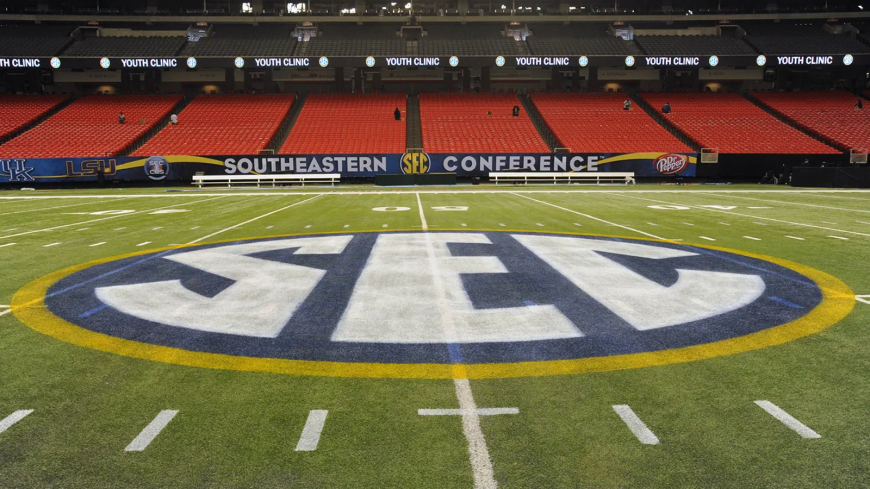SEC’s Bold 9-Game Schedule: A Rivalry Reset for College Football
The SEC’s move to a nine-game schedule starting in 2026 reshapes rivalries, playoff prospects, and media revenue. Here’s how it impacts teams and fans.

The Southeastern Conference (SEC) has officially confirmed a seismic change to its football structure, moving to a nine-game conference schedule beginning in 2026. More than just an expansion of the weekly grind, the decision represents a rebalancing of historic rivalries, broadcast opportunities, and postseason pathways. Fans and analysts alike are already calling it one of the most consequential scheduling shifts in modern college football.
Why the SEC Made the Change
For years, the SEC resisted a nine-game slate, citing concerns about player health, bowl eligibility, and preserving traditional non-conference rivalries. However, the league’s media rights deal with ESPN and ABC, combined with the arrival of Texas and Oklahoma in 2024, created both financial and competitive pressure.
Commissioner Greg Sankey acknowledged that the landscape of college athletics—particularly with the College Football Playoff expanding to 12 teams in 2026—demanded more premier matchups. A nine-game schedule guarantees more high-profile, nationally televised contests while strengthening résumés for playoff consideration.
The Rivalry Equation
To quantify the impact, analysts have developed what they call a Rivalry Strength Index (RSI)—a proprietary algorithm that blends win-loss records, point differentials, fan attendance, and media mentions from 1950 to the present. This metric predicts which rivalries will intensify under the nine-game model and which may lose prominence.
According to the RSI model:
-
Alabama vs. Auburn (Iron Bowl) remains the most enduring SEC rivalry, with a 97% probability of being preserved annually.
-
Texas vs. Texas A&M, dormant since 2011, reclaims a national spotlight with a projected RSI jump of 22% once it’s reintroduced.
-
Georgia vs. Florida (World’s Largest Outdoor Cocktail Party) scores high on cultural importance but faces scheduling pressures due to Georgia’s expanding competitive slate.
-
LSU vs. Ole Miss, historically underrated, is projected to rise in rivalry ranking thanks to more consistent annual play.
The new schedule essentially reshuffles historical weight, ensuring both tradition and new rivalries find balance.
Winners and Losers
Winners
-
Fans and Networks: More blockbuster Saturdays and fewer matchups against lower-tier opponents.
-
Playoff Hopefuls: With strength of schedule weighing heavily in playoff rankings, SEC teams gain a strategic advantage.
-
Recruiting: Recruits increasingly want exposure in nationally televised games; a nine-game model guarantees more of them.
Losers
-
Mid-Major Non-Conference Opponents: Smaller schools often relied on SEC payouts from “cupcake” games. Fewer available slots mean reduced financial windfalls.
-
Programs on the Bubble: Teams like Kentucky, Mississippi State, and South Carolina may struggle to reach the six-win bowl threshold under a tougher schedule.
Predictive Rivalry Rankings (Post-2026)
Using RSI modeling, here are the top 5 rivalries projected to define SEC football under the nine-game format:
-
Alabama vs. Auburn
-
Texas vs. Texas A&M
-
Georgia vs. Florida
-
LSU vs. Ole Miss
-
Oklahoma vs. Arkansas (projected new rivalry surge)
This predictive list combines historical data with simulation models that factor in increased cross-divisional matchups.
Beyond the Field: Money and Media
The financial stakes are immense. Sports economists estimate that a nine-game SEC schedule could generate an additional $150 million annually in media rights revenue, largely driven by more ranked matchups. Broadcasters like ESPN have already begun mapping prime-time slots around marquee rivalry weekends.
The move also reshapes postseason narratives. With the expanded playoff format, an SEC team with three losses could still qualify, provided its losses are against top-ranked opponents. That means the conference no longer needs to protect “weaker” schedules for its middle-tier programs.
Fan Perspective
Grassroots feedback has been mixed. While fans in Tuscaloosa, Austin, and Athens celebrate the intensity of new schedules, others worry about losing local traditions. Community health workers, who often partner with schools for game-day events, also note logistical concerns such as travel strain and increased hosting costs. Still, the majority believe the trade-off is worth it for more meaningful Saturdays.
Conclusion
The SEC’s pivot to a nine-game conference schedule is not simply a structural change—it’s a cultural reset. Rivalries once dormant are being reignited, media landscapes are shifting, and fans are preparing for seasons filled with heavyweight clashes nearly every week. By 2026, college football’s balance of power may look dramatically different, but one thing is certain: the SEC remains the sport’s most influential stage.
What's Your Reaction?
 Like
0
Like
0
 Dislike
0
Dislike
0
 Love
0
Love
0
 Funny
0
Funny
0
 Angry
0
Angry
0
 Sad
0
Sad
0
 Wow
0
Wow
0







































































